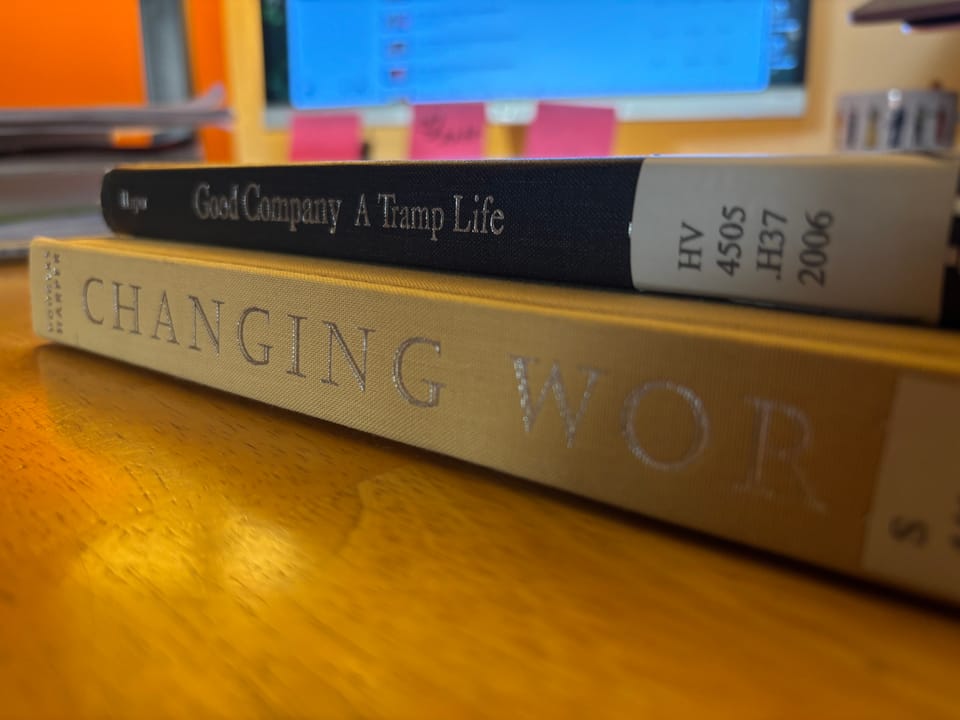four note friday 1.7 | Photovoice and Photo Elicitation

Using four axioms for grounding within this week's post, I provide an overview of the relationship and differences between photovoice and photo elicitation. These are two related yet distinct concepts sometimes erroneously conflated.
Too often, I have seen both photovoice and photo elicitation misrepresented in the literature. Details matter within the inquiry process. Getting clear (and writing clearly) about the definitions of terms guiding our actions is vital. So, let's take a moment to sift through the relationship and the differences between photovoice and photo elicitation.
☂️🪜 Axiom 1. Photovoice is a methodology; photo-elicitation is a method.
Think of a methodology as the larger frame or approach guiding a project, while methods are the tools inside the frame. Example qualitative methodologies include ethnography and grounded theory, while examples of qualitative methods include interviews and focus groups. Photovoice is a methodology with attending theoretical underpinnings, methods, and aims under its large umbrella. Photo elicitation is a method that can be applied in many methodological contexts. If you are looking for a photo elicitation primer, I highly recommend this article by Douglas Harper.
📷🎙️ Axiom 2. All photovoice projects include photo elicitation; not all photo elicitation is photovoice.
There is a perception out there that any research involving photography or photographs in any way is some form of photovoice. That is simply not the case. The broad and ever-growing arena of visual methodologies and methods is diverse and complex. It therefore demands specificity and definitional work. Every photovoice study uses participant-generated photographs to elicit discussion and reflection of some kind. Photo elicitation can be—and is—used outside of photovoice. According to Harper, and as written in the article linked above, "photo elicitation is based on the simple idea of inserting a photograph into a research interview." Photovoice is much, much more.
🙋🏾♀️📸 Axiom 3. All photovoice projects are participatory; photo elicitation is not always participatory.
Participation is one of the non-negotiable cores of photovoice. Photographs generated within photovoice projects are created by participants/co-researchers. In photo elicitation, sometimes the photographs are participant-generated. And sometimes they are generated by the researchers. Photovoice is a form of critical participatory action research (CPAR). Photo elicitation is not bound to CPAR projects alone.
🗂️🌎 Axiom 4. Photo elicitation came before photovoice.
Photo elicitation has been around since the 1950s as a coined research method. John Collier, Jr.'s work on the topic is seen as foundational. Photovoice, which emerged in the mid-1990s, built on that foundation—and the work that followed related to myriad freedom struggles—to center participation, community expertise, and social change.
Photovoice and photo elicitation are related but distinct. One is an overarching methodology, the other a flexible method. Understanding and articulating the differences keeps us clear on the work we’re really doing.
🥹 Thanks for spending a moment with me this Friday.
💌 If you’re new here, welcome! I hope this space becomes one you look forward to each week.
📬 Have a question you want me to answer in a future issue? Reach me at photovoicefieldnotes@gmail.com. I'd love to hear from you.
Thanks for being here.
Warmly,
Mandy
photovoice field notes
photovoicefieldnotes.com
Member discussion